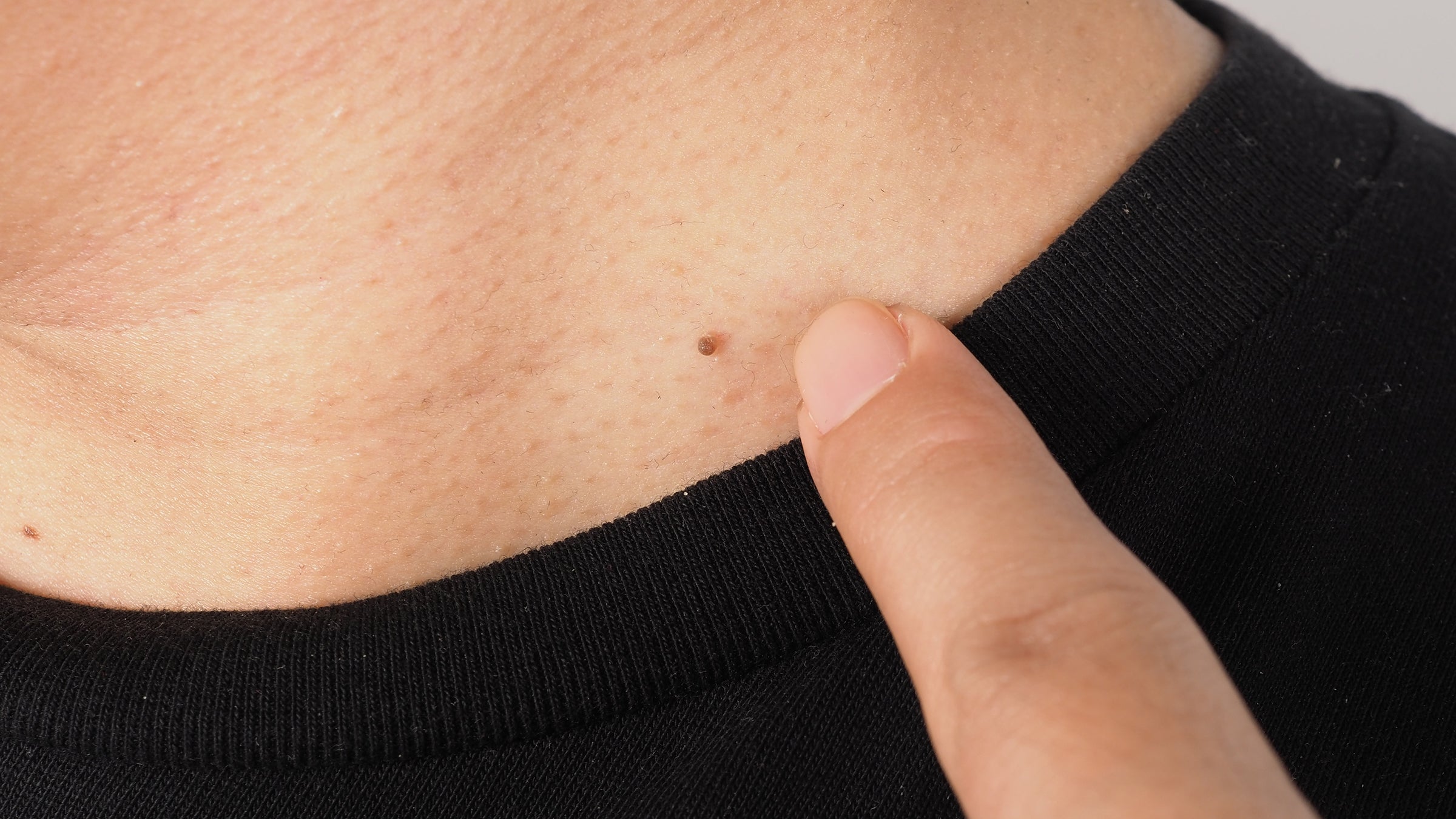You know that little bump on your neck? The one that catches on your earring or gets tugged when you pull on a turtleneck? Yeah, that’s a skin tag. And you’re not alone — almost half of all adults get them. They’re totally harmless, but man, can they be annoying.
So you start thinking: how much does it cost for skin tag removal, anyway?
I get it. It’s not an emergency. But it’s bothersome. And before you spend your hard-earned cash or worse — try snipping it off with nail clippers in your bathroom — let’s have a real conversation about what you’re actually going to pay, when insurance might help, and whether that $9.99 DIY kit on Amazon is really worth the risk.
Let’s cut through the fluff.
Quick Answer

Most people pay between $150 and $600 to have skin tags removed by a professional. If you’re asking about skin tag removal cost without insurance, that’s pretty much the standard range — especially if you’ve got more than a few.
But here’s the thing: it’s not a one-size-fits-all price. Some people walk out the door for $100. Others get hit with a $800 bill — all because they didn’t realize their procedure was happening at a hospital outpatient center instead of a dermatology clinic.
Yeah. The details matter.
For example, one study from FAIR Health Consumer quoted by GoodRx showed a patient in Columbus, Ohio, was quoted $156 for up to 15 tags. Not bad, right? But in New Orleans? That same procedure cost $603. Crazy, I know.
What You’ll Actually Pay
So here’s a realistic breakdown — not some bloated estimate from a clinic trying to scare you into a consultation.
- 1 to 15 tags: $150–$300
- 16 to 25 tags: $300–$500
- 26 or more: $500–$600+
Some clinics charge per tag — like $35 to $75 each. Others do what’s called a “batch rate” — you pay one fee to remove as many as they can in one visit. That’s usually the smarter deal.
And if you’re asking “how much does it cost for skin tag removal at an urgent care?” — good news. It’s often cheaper. Some urgent care centers and med spas offer it for as low as $100, especially if you only have a few.
What Increases the Cost?
It’s not just about how many tags you’ve got. A lot of little things add up — and some of them sneak up on you.
Number of Tags
The more tags, the higher the cost — but here’s the trick: most providers charge a flat rate for the first 10 to 15, then a lower fee for every 10 after that. Makes sense — once they’ve got you numbed and set up, removing a few extra doesn’t take that much longer.
But if you’ve got a whole bunch — like 30 or more — they might split it into two visits so your skin can heal between sessions. That means two office fees. Surprise!
Where It Is on Your Body
Location, location, location — same deal as real estate. A tag on your thigh? Probably straightforward. One on your eyelid? Now we’re getting into precision territory.
Areas like the eyelids, groin, or face require more care. There’s less margin for error. That means more time, more expertise, and yeah — more money. These delicate zones often come with a higher quote, sometimes adding $50–$100 to the base price.
How It’s Removed
There are a few ways doctors take them off. None are painful (they numb it first), but the method can slightly affect the price.
| Method | What Happens | Average Cost |
|---|---|---|
| Cryotherapy | Freezing the tag with liquid nitrogen | $60–$100 per tag |
| Excision (Snipping) | Cutting it off with sterile scissors | $100–$150 |
| Cauterization | Burning it off with electric current | $100–$200 |
| Laser Removal | Using a focused beam of light | $150–$200+ |
Laser is usually the most expensive — popular at med spas, but not always necessary. For most tags, cryotherapy or snipping works just as well. Save the laser for the tricky spots.
Does Insurance Cover It?
Here’s where it gets real. Your health insurance? It probably won’t cover it — unless the tag is causing a real problem.
Insurance companies see most skin tag removal as cosmetic. That means you pay 100% out of pocket. Same goes for Medicare and Medicaid — they don’t cover it just because you don’t like the way it looks.
When Will Insurance Pay?
The good news? You can get coverage — if you can prove it’s medically necessary.
For example, if the tag is:
- Constantly bleeding
- Getting infected or inflamed
- Interfering with daily life — like getting caught in your razor every morning
- Obstructing your vision (yes, even on the eyelid)
- Changing in size, color, or texture
If your dermatologist thinks it might not be a tag — maybe it’s a wart or something more serious — they’ll remove it and send it to a lab. That’s when insurance usually kicks in.
Medicare follows the same rule. According to official guidelines, Medicare covers removal only if it’s deemed “medically necessary”, not for emotional distress or appearance alone.
Medicare and Skin Tags
If you’re on Medicare, you might be asking: does Medicare cover skin tag removal?
The answer? “It depends.”
Original Medicare (Parts A and B) and Medicare Advantage (Part C) can cover the procedure — but only if it’s not just for looks. If it’s bleeding, painful, or suspected to be cancerous? Then yes, it can be covered. Your doctor has to document that medical need clearly.
But if you’re just tired of seeing it in the mirror every morning — sorry, that’s on you.
At-Home Removal: Worth the Risk?

I’ll be honest — I get the temptation. There are kits, oils, even little plastic bands that claim to “strangle” the tag until it falls off. All for under $30.
Compared to $150? That sounds like a steal.
But here’s the thing: skin tags have blood vessels inside them. Cut or pinch the wrong way, and you’re looking at bleeding, infection, or a scar that’s way more noticeable than the original tag.
And what if it’s not actually a skin tag?
According to the Cleveland Clinic, some things that look like skin tags could actually be warts, moles, or even early signs of skin cancer. Try to remove something dangerous without knowing what it is? That’s a risk I wouldn’t take.
Common At-Home Methods (and Their Risks)
- Apple cider vinegar: Soak a cotton ball, tape it on, wait days. May irritate the skin. Doesn’t always work.
- Dental floss or bands: Tie it tight to cut off blood flow. Can be painful, cause bleeding, and risk infection.
- DIY kits: Some use freezing methods similar to cryotherapy. Safer than cutting, but still not foolproof.
You might save money — but is it worth the worry? Personally? I’d rather pay a little more and know it’s done right.
Hidden Fees You Should Know About
The base removal cost is just the start. There are a few extra charges that can show up on your bill — and catch you off guard.
Office Visit Fee
Don’t forget: you’re seeing a doctor. That visit might be billed separately — especially if you go through your primary care provider first. Could be $100 or more, depending on your insurance network.
Pathology or Biopsy Fee
If your tag is large, dark, or irregular, your doctor might send it to a lab. That’s called a pathology test. Makes sense — better safe than sorry.
But here’s the kicker: that test can cost anywhere from $80 to $200 — or even more, if insurance isn’t involved. One study found biopsy costs without insurance range from $150 to $1,500 via Healthline.
Always ask: “Will you test it? And if so, how much extra will I pay?”
Facility Fees
This one’s sneaky. If your removal happens at a hospital-owned clinic or surgical center — not a private dermatology office — you might get hit with a facility fee. Big time.
One patient in Ohio was quoted $737 at a hospital — but over $4,000 at an ambulatory surgical center for the same procedure. The work was identical. The price difference? Where it was done.
Smart Ways to Save Money

You don’t have to pay full price and you don’t have to suffer through that awkward turtleneck tug-of-war either. There are smarter ways to handle it.
Shop Around
This isn’t like picking a primary care doctor — you don’t need to stick with one. Call 3 or 4 clinics in your area and ask straight up: “What’s your all-in cost for removing 10 skin tags?”
You’ll be amazed at the range. Some clinics bundle it. Some charge per tag. Others include the visit fee, others don’t.
Use HSA or FSA
Even if insurance won’t pay, you can use tax-free dollars from your Health Savings Account (HSA) or Flexible Spending Account (FSA). That’s a legit win — it lowers your out-of-pocket cost by however much you save in taxes.
Ask About Payment Plans
Plenty of dermatology offices offer payment options. Some use CareCredit — a medical credit card with 0% interest if paid within 6–12 months. Others have their own in-house financing.
One clinic even mentioned buy-now-pay-later (BNPL) options — kind of like Klarna, but for skin tags. Just read the terms. Miss a payment? Interest can spike fast.
So… Is It Worth It?
Let’s get real. Skin tags aren’t dangerous. They don’t hurt (usually). You don’t need to remove them.
But if it’s bothering you — if you hate how it looks, or you’re tired of it getting snagged every time you dress up — then yeah, it’s worth it.
Removing it can be a small act of self-care. You’re not fixing something broken. You’re just saying: “I want to feel comfortable in my own skin.” And that’s valid.
Just know this: once it’s gone, it won’t grow back in the same spot. But new ones can form — especially if you’re prone to them (diabetes, higher BMI, genetics). So it might not be a one-and-done thing.
The Bottom Line
Skin tag removal cost in 2025? Realistically, most people pay between $150 and $600 — especially if you’re going the professional route without insurance. It depends on how many you have, where they are, and where you live.
Insurance? Only if it’s medically necessary. Medicare? Same deal. So if you’re doing it for comfort or confidence, plan for out-of-pocket.
But here’s the smartest thing you can do: talk to a dermatologist. Get a clear quote. Ask about all-in pricing. Use your HSA. And don’t — I repeat, don’t — try to DIY it with nail clippers.
Your skin is worth it. Not because the tag is dangerous, but because peace of mind? That’s priceless.
So go ahead. Book that appointment. Get it done right. And walk out feeling a little lighter, a little smoother, and a whole lot more like yourself.


















Leave a Reply
You must be logged in to post a comment.